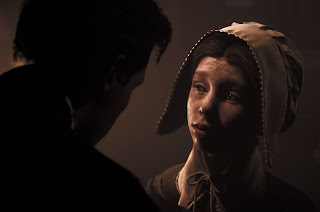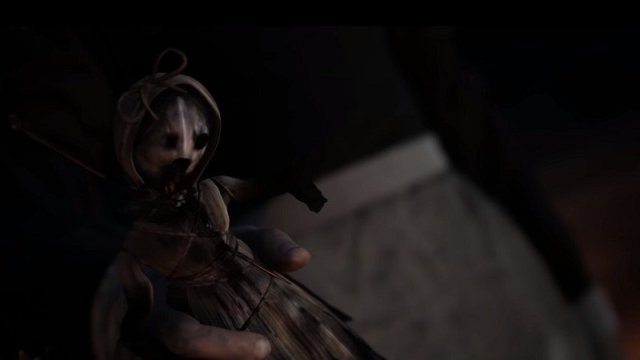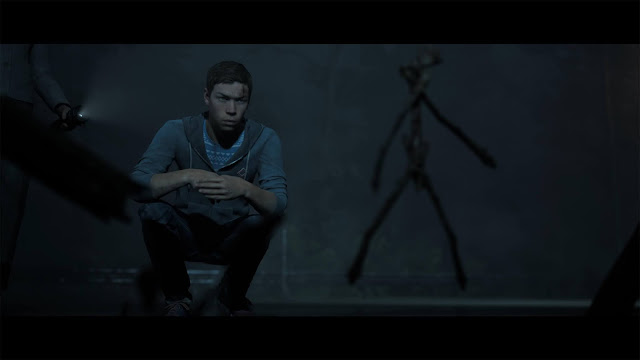Supermassive Games has a house style which is immediately recognisable and comfortably niche. The team makes slasher games: just like a slasher film, but with quick-time-events and moral choices which determine who lives and who dies. After the runaway success of Until Dawn, Supermassive set up a nice routine for itself with The Dark Pictures – a series of 4-5 hour titles with different themes which are designed to be enjoyed with friends, in one sitting. 2019 saw the abandoned-ship-themed Man of Medan, and now this year, just in time for Halloween, we have the Salem Witch Trial-themed instalment, Little Hope.
On a foggy night, a groggy bus driver encounters a roadblock in a dark New England highway, and is forced to take a detour through the historic town of Little Hope, upon which a notorious witch hunt took place 400 years prior. Suddenly a young girl appears in the middle of the road and the bus swerves, tipping onto its side, and throwing the five passengers onto the road. Players need to guide four university students – naïve Andrew, boorish Daniel, daring Taylor and the dismissive mature-aged student Angela – as well as their arrogant professor, John, through the fog-cloaked night through the haunted village, searching for safety. As with Supermassive’s other titles, the characters all have their unlikeable traits and start off rather hostile towards each other – and with the player’s choices, they can learn to work together, or exacerbate their vices into something deadly.
Compared to Man of Medan, which was for the most part a hyper-modern, hyper-linear narrative, Little Hope plays fast and loose with its timeline. Players negotiate three vaguely connected sequences of events – the present day, in which the five characters navigate the run down and abandoned town of Little Hope, the 1970’s, in which a family of five grapple with the downturn of the regional village’s lifeblood industries, and the late 1600’s in which a series of witch trials test the faith and resolve of the English colony’s Puritanical denizens. The game’s Bearing system, which provides summaries of the player’s discoveries and choices, ensure that these three timelines never feel confusing.
Of course, it helps too that the narrative is relatively simple by literary standards. As par for the course considering the slasher genre, backstory and nuance aren’t a high priority compared to the high-impact bloodletting. While there is a lot of research done into the historical era of the Salem Witch Trials, the game doesn’t treat this setting with much reverence outside of having ghostly figures in pilgrim costumes jumpscare the player intermittently. And despite dropping quotes from The Crucible and various Shakespearean plays in the script, the theatrical motif never really goes anywhere. Little Hope doesn’t seem interested in having any lasting thematic influence.
And while that may be dismaying to think about in retrospect, I must admit that narrative depth is a worthy sacrifice to make for Little Hope’s moment-to-moment thrills. For the entire four-hour playtime I was never distracted, never relieved, always tense, always enthralled. Little Hope is Supermassive Games flexing its cinematic chops to a frighteningly effective degree. Camera angles, lighting and sound are arranged to deliver frequent, inventive and unexpected scares, holding players in suspense and fear throughout the game’s runtime. Even Man of Medan took nearly an hour for the stakes to ramp up, but Little Hope thrusts players into the thick of it right away. When it comes to tone and atmosphere, it doesn’t get much better than this.
I did feel that the game’s weakest segments were its exploration and puzzle moments. Not that there are any complex puzzles to be solved, but occasionally the game drops the characters into an indoor environment to search for clues. Little Hope does have its fair share of secrets and goodies to find, such as environmental clues which flesh out the game’s various timelines, as well as Premonitions which hint at potential character deaths in the future. But the tension is relaxed a little in these exploratory moments, and it’s ramped back up in the cinematic, choreographed segments – so often I wanted to be out of these free-exploring scenes as fast as I could, even if it meant leaving behind some worldbuilding baubles.
If I had to make one more negative comment, it’s that Little Hope misses so many opportunities to be something truly interesting. The worldbuilding of the town is careful but safe, not straying too far from conventional tropes that savvy readers will recognise from The Crucible and The Blair Witch Project. I did like the way the literary references effectively makes a couch of players approach the game from different levels of expertise – someone familiar with history or literature might offer additional insights, and thus provide better advice, compared to a player making decisions solely on their gut response. At times I felt like the scares were relying on horror movie lexicon rather than creating something truly original – and while I jumped all the same, I do like my horror titles to unnerve me with something new and unexpected, and by the time the game was wrapping up the plot, the jump scares and ghostly faces were getting predictable. I was also a little underwhelmed by the visual design – everything’s dark and grey, and seldom is a locale given any memorable visual flair.
When reviewing Little Hope, it’s a tough choice to assess it based on how well it met my personal expectations, versus how well it delivered the vision that the developers set out to achieve. Because when speaking of the former, I was definitely left wanting more with this one. There was an opportunity to make grander statements about religion, hysteria, theocracy and the supernatural when the game’s witch-hunt themed setting was announced. But I must admit that a more nuanced rendering of the historical era would have hampered Supermassive Games’ slasher roots, and dulled the impact of Little Hope’s most shocking scenes. These games aren’t interested in the darker aspects of the human psyche, the vulnerabilities and existential questions which impart the lingering sense of dread that lasts after the story is told. No, The Dark Pictures so far has been all about popcorn-horror, the kind where the viewer screams and jumps before remembering that everything’s all right after. They’re not elegant, but they’re not trying to be – and that’s perfectly acceptable, especially if it’s what the player knows what they’re getting into. And as much as I’d wanted the next Dark Pictures title to take a more cerebral approach to horror, I’m happy to welcome a well-crafted witch-themed slasher game all the same.
Contributor
The critic was provided with a copy of this game for review.











